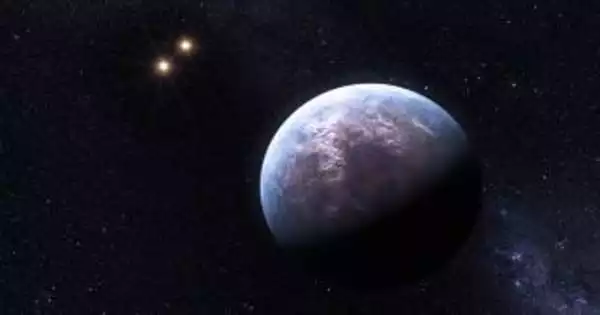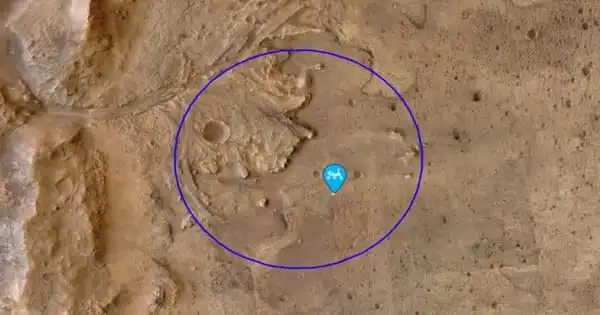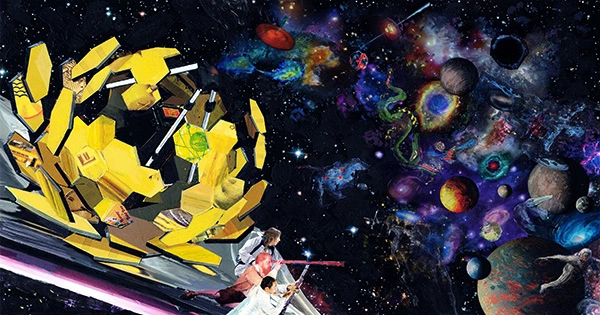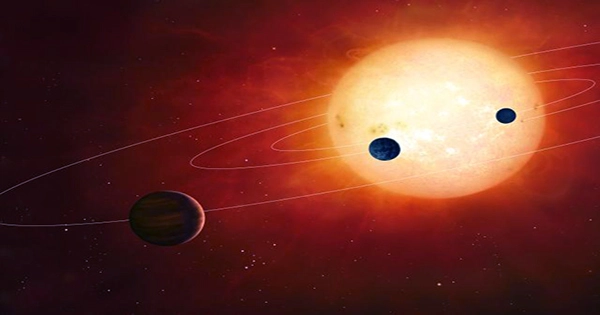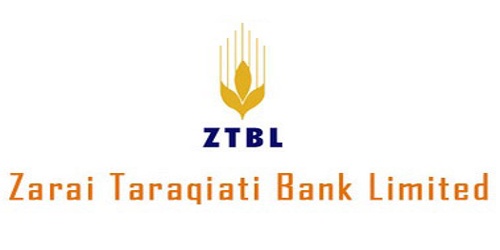Gliese 667 A (GJ 667 A), the system’s biggest star, is a K-type main-sequence star with the stellar classification K3V. It possesses roughly 73 percent of the Sun’s mass and 76 percent of the Sun’s radius, but only about 12-13 percent of the Sun’s light. The proportion of elements other than hydrogen and helium referred to as the star’s metallicity by astronomers, is substantially lower than that of the Sun, with a relative abundance of roughly 26 percent solar. This star’s apparent visual magnitude is 6.29, which, when multiplied by the star’s calculated distance, yields an absolute magnitude of roughly 7.07. (assuming negligible extinction from the interstellar matter).
The secondary star Gliese 667 B (GJ 667 B), like the parent, is a K-type main-sequence star. However, it has a slightly later stellar classification of K5V. This star has a mass of around 69 percent of that of the Sun, or 95 percent of the primary’s mass, and it emits approximately 5 percent of the Sun’s visible luminosity. The apparent magnitude of the secondary is 7.24, giving it an absolute magnitude of about 8.02.
Gliese 667 (142 G. Scorpii) is a triple-star system in the constellation Scorpius located 6.8 parsecs (22 light-years) from Earth. The masses of all three stars are less than that of the Sun. There is a 12th-magnitude star nearby, but it is not gravitationally connected to the system. To the naked eye, the system appears to be a single faint star of magnitude 5.89.
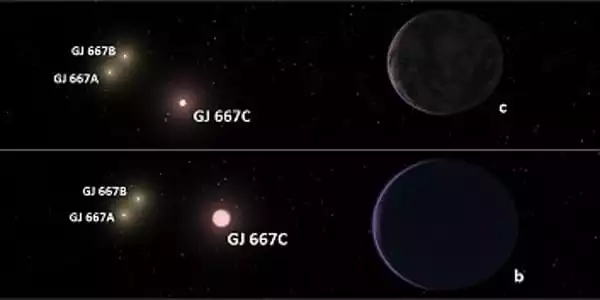
The system’s proper motion is relatively high, exceeding 1 second of arc every year. GJ 667 A and GJ 667 B, the two brightest stars in this system, orbit each other at an average angular separation of 1.81 arcseconds with a high eccentricity of 0.58. At the estimated distance of this system, corresponds to a physical separation of around 12.6 AU, or nearly 13 times the distance between the Earth and the Sun. Their eccentric orbit gets them as close as 5 AU or as far as 20 AU apart, equating to an eccentricity of 0.6.
This orbit takes 42.15 years to complete, and the orbital plane is inclined at an angle of 128° to the line of sight from Earth. The third star, GJ 667 C, orbits the GJ 667 AB pair at an angular separation of around 30″, which amounts to a minimum separation of 230 AU. GJ 667 C also features two verified super-Earths and five other candidates, albeit the innermost, GJ 667 Cb, may be a gas dwarf; GJ 667 Cc, as well as the problematic Cf and Ce, are in the circumstellar habitable zone.
